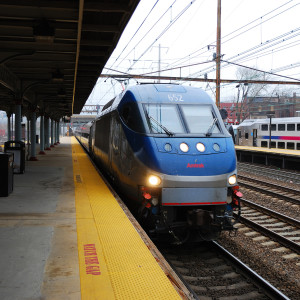Amtrak recently announced that it will begin operating nonstop service between New York and Washington in 2 hours and 35 minutes in September. This would be exciting were it not for the fact that this is slower than trains operated before Amtrak 50 years ago. In 1969, the Penn Central Railroad ran trains between New York and Washington in just two hours and thirty minutes.
Five minutes may not seem like much, but 50 years of progress should have resulted in faster, not slower, trains. This is especially true as Amtrak brags that its trains go “up to 150 mph” while Penn Central’s trains were limited to 120. Amtrak also claims the Acela is profitable, but if that were true, Amtrak would have put some of those profits into improving its infrastructure. Instead, Amtrakacknowledges that the Boston-to-Washington corridor has a $38 billion backlog of maintenance needs. If the route were truly profitable, Amtrak would never have allowed such a backlog to build up.
The reality is that Amtrak can only claim a profit by using an accounting system that, as the Rail Passengers Association charges, is “fatally flawed, misleading and wrong.” This is the same accounting system that Amtrak uses to claim that nationally its trains earn enough passenger revenues to cover 95 percent of their operating costs.
Amtrak covers up its losses with two major accounting tricks. First, Amtrak counts subsidies it receives from 17 states as “passenger revenues” even though the vast majority of taxpayers who pay those subsidies never ride Amtrak.
Second, Amtrak doesn’t count the second biggest operating cost on its expense sheet: depreciation. Depreciation is not just an accounting fiction; it is a real cost indicating how much a company needs to spend or set aside to keep its capital improvements running. After correcting these two tricks, passenger revenues cover only 55 percent of operating costs and none of the trains earn a profit.
Amtrak’s fantasy that depreciation shouldn’t be counted as a cost shows that it is engaged in the old railroad accounting trick of propping up the bottom line by deferring maintenance. For example, Amtrak’s fleet of passenger cars have an expected lifespan of 25 years, yet their average age is more than 33 years and less than a quarter are under 25 years.
Amtrak’s biggest trick of all is making people think that intercity passenger trains are vital to our economy. In fact, the typical American rode Amtrak just 20 miles in 2017, compared with nearly 15,000 miles by automobile, 2,100 miles by air, and more than 1,100 miles by bus. If Amtrak disappeared tomorrow, hardly anyone would notice, not even in the Northeast Corridor, where Amtrak reluctantly acknowledges it carries just 6 percent of intercity travelers.
There’s a good reason few people ride Amtrak: passenger trains are expensive. Amtrak fares in 2017 averaged more than 33 cents a passenger mile, compared with average airfares of 13 cents a mile. Federal and state subsidies to Amtrak added around 33 cents per passenger mile, bringing the total cost of passenger train travel to more than 66 cents a passenger mile.
Of course, airlines and highways are also subsidized, and we should end those subsidies as well. But federal, state and local subsidies to air and auto travel average around a penny per passenger mile. So why does Amtrak deserve subsidies of more than 30 cents per passenger mile?
Despite the imbalanced subsidies, Amtrak’s already minuscule share of travel is steadily eroding. In the last five years, air travel has grown 23 percent and auto driving 8 percent, but Amtrak’s passenger miles have declined 7 percent.
Personally, I love passenger trains, and rode Amtrak more than 11,000 miles in 2017. But I don’t think other people should be forced to subsidize my hobby. As much as I enjoy them, passenger trains are an expensive, archaic form of travel that has no more business in the 21st century than dirigibles or horse-drawn streetcars.
So what should Congress do about Amtrak? Rather than give it billions of dollars to restore or build infrastructure that it can’t afford to maintain, Congress should simply agree to pay Amtrak a given amount for every passenger mile it carries. This will give Amtrak an incentive to focus on passengers, not politics.
Over time, Congress should reduce that amount until Amtrak receives no more per passenger mile than airlines or highways — by which time I hope airline and highway subsidies will also be eliminated. Any trains that can truly be profitable will survive, but if they do it will be because Amtrak has found ways to efficiently transport people, not because of accounting tricks.

